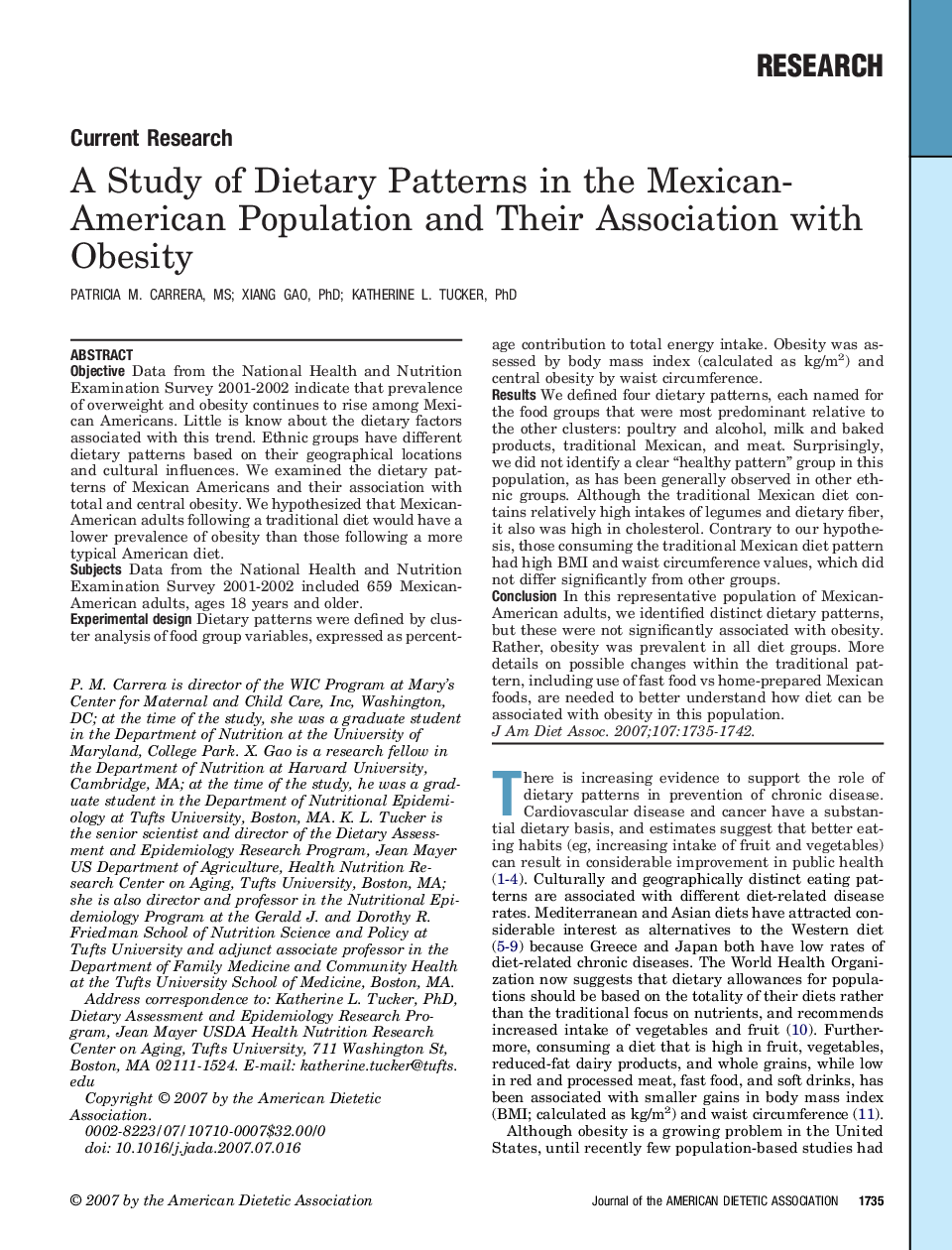| Article ID | Journal | Published Year | Pages | File Type |
|---|---|---|---|---|
| 2655704 | Journal of the American Dietetic Association | 2007 | 8 Pages |
ObjectiveData from the National Health and Nutrition Examination Survey 2001-2002 indicate that prevalence of overweight and obesity continues to rise among Mexican Americans. Little is know about the dietary factors associated with this trend. Ethnic groups have different dietary patterns based on their geographical locations and cultural influences. We examined the dietary patterns of Mexican Americans and their association with total and central obesity. We hypothesized that Mexican-American adults following a traditional diet would have a lower prevalence of obesity than those following a more typical American diet.SubjectsData from the National Health and Nutrition Examination Survey 2001-2002 included 659 Mexican-American adults, ages 18 years and older.Experimental designDietary patterns were defined by cluster analysis of food group variables, expressed as percentage contribution to total energy intake. Obesity was assessed by body mass index (calculated as kg/m2) and central obesity by waist circumference.ResultsWe defined four dietary patterns, each named for the food groups that were most predominant relative to the other clusters: poultry and alcohol, milk and baked products, traditional Mexican, and meat. Surprisingly, we did not identify a clear “healthy pattern” group in this population, as has been generally observed in other ethnic groups. Although the traditional Mexican diet contains relatively high intakes of legumes and dietary fiber, it also was high in cholesterol. Contrary to our hypothesis, those consuming the traditional Mexican diet pattern had high BMI and waist circumference values, which did not differ significantly from other groups.ConclusionIn this representative population of Mexican-American adults, we identified distinct dietary patterns, but these were not significantly associated with obesity. Rather, obesity was prevalent in all diet groups. More details on possible changes within the traditional pattern, including use of fast food vs home-prepared Mexican foods, are needed to better understand how diet can be associated with obesity in this population.
